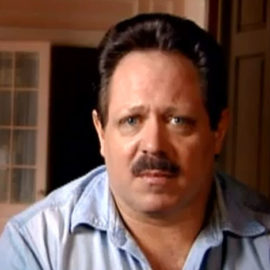

This article is an excerpt from the Shortform book guide to "Maybe You Should Talk to Someone" by Lori Gottlieb. Shortform has the world's best summaries and analyses of books you should be reading.
Like this article? Sign up for a free trial here .
Who are the main Maybe You Should Talk to Someone characters in Lori Gottlieb’s memoir? How do their stories unfold throughout the book?
Maybe You Should Talk to Someone is a memoir by psychotherapist and author Lori Gottlieb. There are five main characters in Maybe You Should Talk to Someone, whose stories are interwoven with Lori’s own narrative about her breakup incident and her time in psychotherapy.
Read about the main Maybe You Should Talk to Someone characters and how their stories unfolded throughout the book.
Maybe You Should Talk to Someone Characters
Maybe You Should Talk to Someone is a memoir by Lori Gottlieb, an author and therapist, about a particularly difficult time in her life—a time when she sought out therapy herself—and common struggles that people have. There are five main characters in Maybe You Should Talk to Someone, whose issues relate to Lori’s issues in some way.
John the Jerk
John is one of Lori’s patients. He’s a bigshot in the TV industry who suffers from anger issues and thinks everyone he meets—including his wife—is stupid. The only things he seems genuinely fond of are his two daughters and the family dog. His issues echo Lori’s sense of loss and her fear of letting others hurt her.
John first comes to Lori because he’s having trouble sleeping. He’s abrasive and rude, and he openly breaks Lori’s rules about therapy: He uses his cell phone during sessions and orders food to eat while they’re talking. He’s emotionally distant, insulting and blaming everyone except himself for his problems. Lori eventually realizes that this is a defense mechanism: If everything is someone else’s fault, then John doesn’t have to do the hard work of looking inward and changing himself.
It takes months of work, but eventually Lori learns that John used to also have a young son named Gabe. Gabe was killed in a car accident that John alternately blamed himself and his wife for, though it turned out the driver who hit them was drunk. Since then, John has tried to repress his feelings and keep working to support himself and his family. While he’s been highly successful professionally, it’s taken a heavy toll on his emotional state and his family life.
By the end of therapy, John has begun to open up with Lori and with his family. He used to forbid any mention of Gabe at home, but now he and his wife have had some cathartic conversations about their son. They’ve also started attending couples therapy.
John’s major revelation is that he doesn’t always have to be one thing or another: He doesn’t always have to be the good guy or the bad guy, and he doesn’t always have to be happy or grieving. Everything comes and goes, including happiness, and the important thing is to accept whatever each moment brings.
Julie the Cancer Patient
Julie is a young woman who learned she had cancer shortly after getting married. While at first the treatment seemed to be working and her disease went into remission, it soon came back. This time, doctors gave her one to five years to live. She’s depressed because she feels like her life is ending right as it was about to truly start. Her problems echo Lori’s fears of mortality and living a meaningless life.
At first, Julie is angry at the unfairness of her situation. Through her sessions with Lori, she eventually makes peace with the fact that nobody knows how his or her life will turn out or even how long it will be. She comes to appreciate what she still has: a loving husband, many close friends, her strength, and a sound mind—for however long they last—and even Lori, her therapist.
With Lori’s encouragement, Julie creates a bucket list for herself; not just a list of things she’d like to do “someday,” but a short, achievable plan for the rest of her life. With death looming over her, Julie—who has always been a cautious and careful planner—discovers a newfound spontaneity and zest for life.
One of the most surprising things Julie does is take a part-time job at Trader Joe’s. After seeing how the cashiers are able to connect with their customers and have immediate, concrete impacts on their lives (by talking with them and bagging groceries), Julie realizes that she wants that for herself. Though her husband, and even Lori, think the idea is ridiculous, she does it anyway and is very happy working there.
As Julie’s disease progresses, doctors have to remove more and more of her organs to buy her more time. She compares it to a twisted game of Would You Rather, a children’s game where the player is presented with two unappealing situations and forced to choose between them. Julie recalls that, as a child, she had broken the rules by choosing neither. In fact, “I choose neither” had been her yearbook quote in high school. Unfortunately, this time “neither” isn’t an option—she has to choose between her body parts and her life.
During one of her last sessions, Julie talks about the plans she’s made for her funeral. She likes the idea of celebrating her life, but while many people in her cancer support groups say that they don’t want people to be sad at their funerals, Julie rejects that idea. Instead, she wants people to remember and mourn her so she knows that she mattered. During that same session, she talks about all the things she misses—that cancer has taken from her—and all the things she’ll miss when she’s dead. She starts cursing and asks Lori to scream obscenities as a sort of final catharsis. Though it’s extremely unorthodox, Lori joins her.
Julie passes away shortly after that, peacefully in her home. Lori goes to her funeral, which is attended by hundreds of people from all different parts of Julie’s life. Even though she’d died very young, Julie had a remarkable impact on the people around her. One of the last things Julie had asked was whether Lori would remember her; even years later, while writing Maybe You Should Talk to Someone, she still does.
Rita’s Loneliness
Out of all the Maybe You Should Talk to Someone characters, Lori feels most connected to Rita, a woman in her 60s who is several times divorced, estranged from her children, and in despair because she thinks it’s too late to turn her life around. During their first session together, she tells Lori that if her life doesn’t improve within a year, she’s planning to end it. Her problems echo Lori’s fears of mortality and loneliness.
Rita’s first husband was an abusive alcoholic, and her greatest regret is failing to protect their kids from him. Similarly, the children have never forgiven her for the way they were raised. She lives alone in a small apartment, where she spends her days painting, napping, and watching TV. She is intensely jealous of the happy family across the hall.
Lori initially encourages Rita to try reaching out and connecting with people, romantically and otherwise. Rita tries using Tinder for a while, but she is disgusted by the aging bodies of the men in her age group. Lori continues trying to get her to reach out to people, though even Lori isn’t sure what kind of new life Rita will be able to make for herself at this point. This issue parallels Lori’s uncertainty about her own advancing age and whether she’ll be able to find another romantic partner at this point in her life.
Rita eventually confesses that there had been a man named Myron in her life, and she’d been very fond of him. He’d even created a website for her to show off her art. However, their relationship had been purely platonic. Right as Rita was considering bringing up romance with Myron, he’d gotten together with another woman he met online. Rita immediately cut off all contact with him, and that incident was what drove her to seek out therapy.
Over time, Rita becomes friends with the family across the hall. Their children are enthralled by her artwork, and with the parents’ help, Rita adds an online store to her website to sell her creations.
At around the same time, Myron’s relationship with the other woman ends because he realizes that he doesn’t enjoy spending time with her the way he did with Rita. He tries to reestablish contact, but Rita storms off.
Aside from Myron, Rita seems to be getting everything she wanted: She now has companionship, and she’s creating art for people who appreciate it—and her. However, she’s showing signs of cherophobia: fear of joy. She explains that she’s always waiting for something to go wrong, like it always has in the past. She’s psychologically unable to let herself be happy.
The next major step Rita takes is writing a letter to Myron talking about her past in detail, and explaining why she reacted the way she did. She’s sure that once Myron knows who she “really” is—in other words, who Rita thinks she is—he’ll be disgusted and abandon her. Lori asks Rita whether the letter is really for Myron, or if it’s what she wants to say to her children. The answer is that it’s both.
Similar to how John is able to reconnect with people after opening up about his son Gabe, Rita’s cathartic reading of the letter drops some of her defenses and lets her make meaningful connections again. Myron doesn’t abandon her, and they end up together.
Rita also eventually makes contact with most of her children again. By giving up the need for forgiveness and trying to create new relationships with her children instead of fixing the old ones, she’s been able to reconnect with all but the youngest—he’s still too angry to let her back into his life, and Rita must accept that that might never change.
However, far from the depressed, suicidal woman she’d been at the beginning of the book, Rita manages to create a happy and fulfilling life for herself, even though she’s already pushing 70.
Charlotte’s Relationship Troubles
Out of all the Maybe Should Talk to Someone characters, Charlotte is the youngest. She is only twenty-one but she feels as though she has already ruined her life because of her drinking problem and a history of getting into bad relationships. She finds herself attracted to emotionally unavailable people and always ends up getting hurt. Charlotte’s connections to Lori’s issues are perhaps the least obvious of all her patients; however, her relationship struggles and her inability to get emotionally invested in healthy people and habits echo Lori’s painful break-up and search for meaningful work.
These problems are evident throughout the book as Charlotte has an on-again, off-again fling with another patient she sits with in the waiting room. The Dude, as she calls him, strings her along for months. He repeatedly breaks up with, then gets back together with, another woman, leaving Charlotte to get hurt over and over.
Charlotte also has a habit of asking Lori for advice about every little problem she has, from what she should do about an upcoming presentation to whether she should call a doctor about an injured toe. Lori believes this habit, and Charlotte’s relationship problems, are the result of having had an unsettled home life. Her parents were often absent, and when they were around, they frequently drank and fought with each other.
This had two major effects on Charlotte’s psyche: First, she had to act like an adult long before she was ready, and Lori thinks she’s trying to compensate for that by acting like a helpless child now; second, she subconsciously associates love with anxiety and uncertainty. That’s why she’s always attracted to people who end up hurting her, and when she meets a man with the qualities she claims to want—emotional stability and reliability—she doesn’t feel a “spark.”
However, perhaps the strangest thing about Charlotte is that she seems to think her real addiction isn’t to alcohol or emotionally distant men, but to therapy. Lori comes to realize that it’s because therapy is a perfect setting for someone like Charlotte, who both craves and fears human connection. She’s able to open up freely while in therapy, but at the end of her hour she always gets to leave.
After months of treatment, Charlotte makes two significant steps: She asks Lori to recommend an outpatient alcohol abuse treatment program, and she asks to move her appointment time so she won’t be sitting with The Dude.
The End
At the end of the book, all Maybe You Should Talk to Someone characters come to terms with their issues. John makes peace with the death of his son Gabe and starts attending relationship counseling with his wife. Rita learns to accept her life for what it is and to appreciate and enjoy the good things without smothering them in despair. Charlotte is finally sober and seemingly ready for healthier relationships.

———End of Preview———
Like what you just read? Read the rest of the world's best book summary and analysis of Lori Gottlieb's "Maybe You Should Talk to Someone" at Shortform .
Here's what you'll find in our full Maybe You Should Talk to Someone summary :
- How a psychotherapist found herself in need of therapy
- How the therapist sees her own fears and feelings reflect in her patients
- Why you have to be ready to accept uncertainty if want to enjoy life






